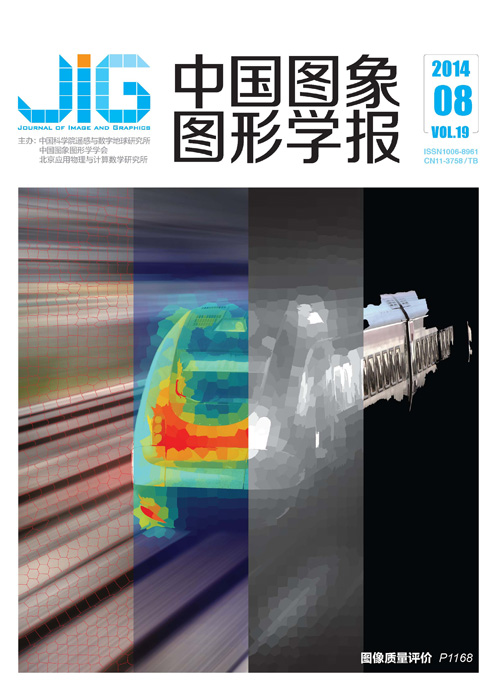
图嵌入正则化投影非负矩阵分解人脸图像特征提取
摘 要
目的 针对投影非负矩阵分解(PNMF)不能揭示数据空间的流形几何结构和判别信息的缺点,提出一种图嵌入正则化投影非负矩阵分解(GEPNMF)人脸图像特征提取方法。 方法 首先构建了描述数据空间的流形几何结构和类间分离度的两个近邻图,然后采用它们的拉普拉斯矩阵设计了一个图嵌入正则项,并将该图嵌入正则项与PNMF的目标函数融合以建立GEPNMF的目标函数。由于引入了图嵌入正则项,GEPNMF求得的子空间能在保持数据空间的流形几何结构的同时,类间间距最大。此外,在GEPNMF目标函数中引入了一个正交正则项,以确保GEPNMF子空间基向量具有数据局部表示能力。最后,对求解GEPNMF目标函数的累乘更新规则(MUR)进行了详细推导,并从理论上证明了其收敛性。结果 在ORL、Yale和CMU PIE人脸图像数据库上分别进行了人脸识别实验,识别率分别达到了94.00%、64.33%和98.58%。结论 实验结果表明,GEPNMF提取的人脸图像特征用于人脸识别时,具有较高的识别率。
关键词
Graph embedding regularized projective non-negative matrix factorization for face image feature extraction
Du Haishun, Zhang Xudong(Institute of Image Processing and Pattern Recognition, Henan University, Kaifeng 475004, China) Abstract
Objective To overcome the disadvantage of projective non-negative matrix factorization (PNMF), which fails to discover the intrinsic geometrical and discriminating structure, this paper proposes a novel graph embedding regularized projective non-negative matrix factorization (GEPNMF) method to extract face image features. Method First, this paper constructs two adjacent graphs to characterize the intrinsic geometrical structure of data subspace and interclass separability. Then, using the Laplacian matrices of the two adjacent graphs, this paper designs a graph embedding regularization incorporated with PNMF's objective function to construct the GEPNMF's objective function. Given that the graph embedding regularization is adopted by the objective function, the learned subspace of GEPNMF can preserve the geometrical structure of the data subspace, while it maximizes the margins between different classes. In addition, this paper introduces an orthogonal regularization into the objective function to ensure the learned bases to be parts-based. Finally, this paper deduces a multiplicative update rule to optimize the objective function and theoretically proves its convergence. Result The face recognition experiments are conducted on ORL, Yale, and CMU PIE face image datasets. The recognition rates reach 94.00%, 66.43%, and 98.58%, respectively. Conclusion Experimental results show that the face image features extracted by GEPNMF can achieve better face recognition performance.
Keywords
|



 中国图象图形学报 │ 京ICP备05080539号-4 │ 本系统由
中国图象图形学报 │ 京ICP备05080539号-4 │ 本系统由